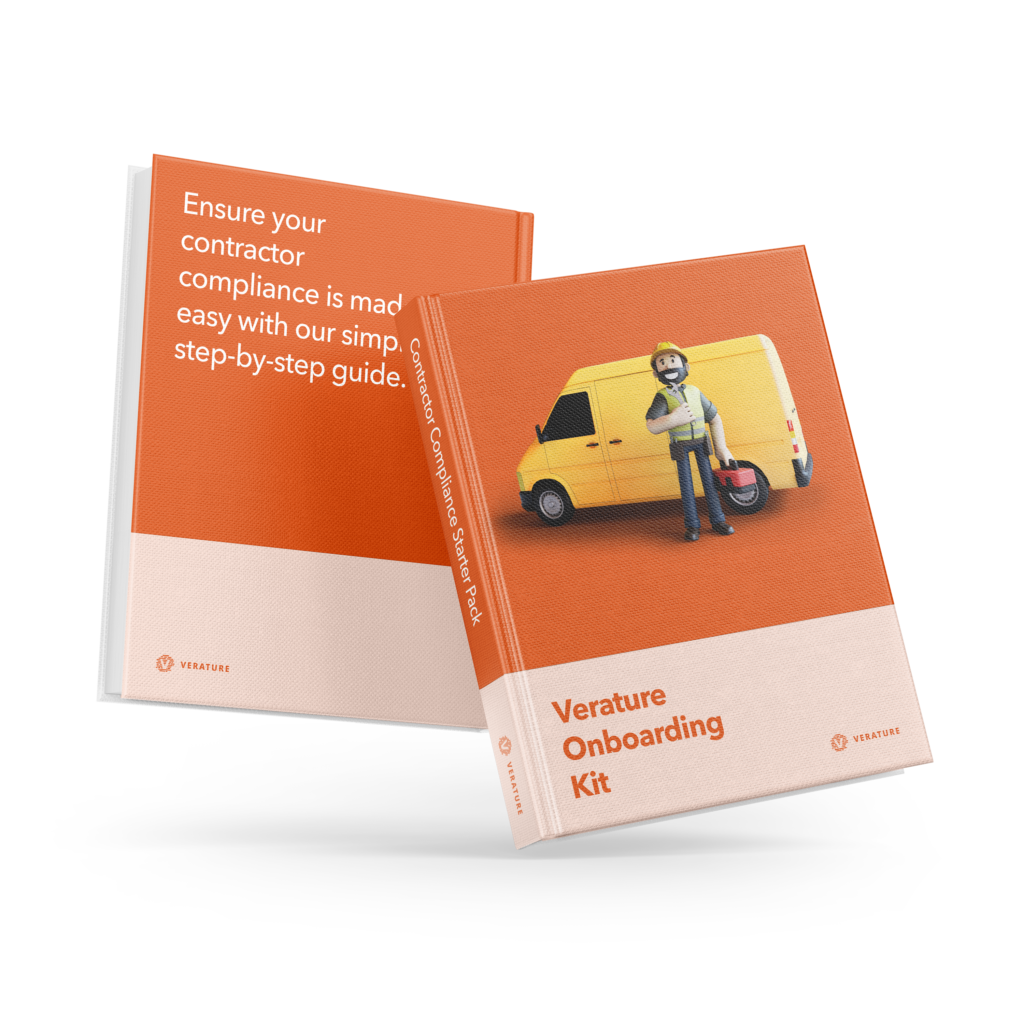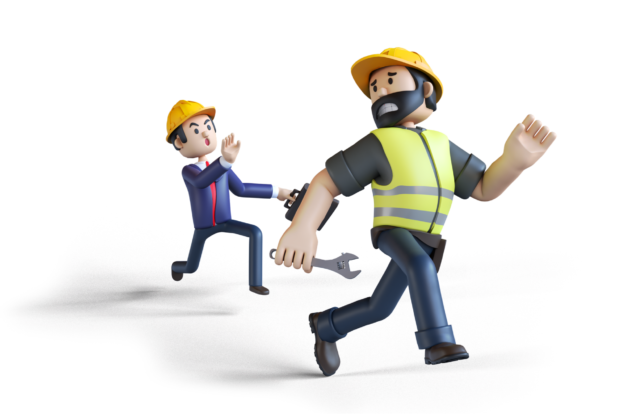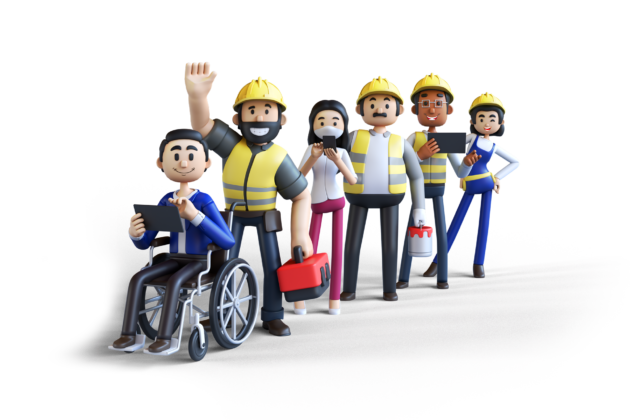- Why Verature?Find out why Verature is the best system for continuous contractor compliance.
- Arrive, Work & Stay Safe
- Removes Paper & Spreadsheets
- Tracks Key Contractors
- Instant 360 Visibility
- Contractor Management Dashboards
- Why Contractor Management Software
- Our Customer Reviews
- Pricing
We don’t hide behind fancy sales teams before we tell you, our prices.- Clients
See who we are working with and what they have to say about Verature.- Resources
Check out our blog, useful guides, whitepapers and product videos.- Prequalification and Induction Guide
- Contractor Compliance Guide
- Mini-Audit your Permit to Work System
- Health and Safety Audit Checklist
- Resource Library
- Blog
Book a demo
Understanding COSHH: Essential Compliance for Contractor Management
The Framework of COSHH
The Control of Substances Hazardous to Health (COSHH) is a critical framework within UK health and safety regulations designed to protect workers from the dangers posed by hazardous substances. These substances can range from everyday chemicals like cleaning agents to more specialised industrial materials such as solvents, paints, or biological agents. COSHH sets out the necessary measures businesses must take to safeguard employees, contractors, and anyone who might come into contact with potentially harmful substances in the workplace.The Importance of Compliance
Adherence to COSHH regulations is not only a legal obligation but also a fundamental aspect of maintaining a safe working environment. By controlling the exposure to hazardous substances, businesses can significantly reduce the risk of occupational illnesses, injuries, and long-term health conditions. COSHH ensures that risks are systematically identified, assessed, and managed, thereby preventing harm before it occurs.Relevance to Contractor Management
The Unique Challenges of Managing Contractors
For businesses that rely on contractors, COSHH compliance is particularly crucial. Contractors often work across multiple sites and may be exposed to a variety of hazardous substances that they are not familiar with. This transient nature of their work increases the likelihood of exposure to unfamiliar risks. Therefore, it is essential that businesses managing contractors have robust COSHH processes in place.Mitigating Risks Through Rigorous Measures
Ensuring that contractors are fully aware of and compliant with COSHH regulations helps mitigate risks not only to the contractors themselves but also to the broader workforce and the business’s reputation. Rigorous control measures, including thorough risk assessments and proper training, are vital in preventing health risks associated with hazardous substances. Furthermore, with the aid of digital tools like Verature’s contractor management platform, businesses can streamline these processes, ensuring that all necessary precautions are taken and documented, thereby maintaining a consistently high standard of safety across all operations.Understanding COSHH: Essential Compliance for Contractor Management
The Foundation of COSHH Compliance
COSHH regulations are designed to provide a comprehensive approach to managing the risks associated with hazardous substances in the workplace. For contractor managers, understanding these regulations is essential to ensuring a safe and compliant working environment. The core elements of COSHH involve identifying hazardous substances, assessing the risks they pose, implementing control measures, and ensuring that all workers, including contractors, are adequately trained and informed.Risk Assessment
At the heart of COSHH is the requirement to conduct thorough risk assessments. This involves identifying all hazardous substances that contractors might encounter and evaluating the level of risk associated with their use or presence. A well-conducted risk assessment allows businesses to pinpoint potential hazards and determine the most effective control measures to mitigate these risks.Exposure Control
Once risks have been identified, COSHH mandates that employers must implement control measures to minimise exposure to hazardous substances. These measures can include engineering controls like improved ventilation systems, administrative controls such as modifying work practices, and the provision of personal protective equipment (PPE) where necessary. The goal is to reduce exposure to safe levels or, where possible, eliminate it entirely.Training and Information
COSHH also requires that all employees and contractors are provided with sufficient information, instruction, and training regarding the hazardous substances they may encounter. This includes understanding the risks, knowing how to work safely, and being aware of the procedures to follow in the event of an emergency. Regular training updates are crucial, particularly for contractors who may work with different substances across various sites.Legal Obligations
The Duty of Employers and Contractor Managers
Under COSHH, employers have a legal duty to protect both employees and contractors from the risks associated with hazardous substances. This responsibility extends to ensuring that all necessary precautions are in place before any work begins. For contractor managers, this means not only understanding COSHH requirements but also ensuring that contractors are fully compliant, regardless of whether they are temporary or permanent staff.Ongoing Monitoring and Review
COSHH compliance is not a one-time effort; it requires ongoing monitoring and review. Businesses must continuously assess whether control measures remain effective and whether any changes in the workplace or work practices might introduce new risks. Regular reviews help ensure that COSHH compliance is maintained over time and that all potential hazards are kept in check.Penalties for Non-Compliance
The Consequences of Failing to Comply
Non-compliance with COSHH can have severe consequences for businesses, ranging from legal action to significant financial penalties. The Health and Safety Executive (HSE) in the UK has the authority to issue fines, enforce improvement notices, or even prosecute businesses that fail to adhere to COSHH regulations. Beyond the financial impact, non-compliance can also lead to reputational damage, particularly if it results in workplace incidents or illnesses.Protecting Your Business and Workforce
To avoid these penalties, it is crucial that businesses take COSHH compliance seriously. Implementing a robust COSHH management system, conducting regular training, and utilising digital tools like Verature’s platform can help ensure that all aspects of COSHH are managed effectively, protecting both the workforce and the business from the risks associated with hazardous substances.COSHH Hazard Symbols
Understanding COSHH Hazard Symbols
COSHH hazard symbols are essential visual warnings that identify the risks associated with hazardous substances. These symbols, which conform to the internationally recognised GHS (Globally Harmonised System) standards, help ensure that everyone in the workplace understands the potential dangers of substances they may encounter. Here are the key COSHH hazard symbols to be aware of:Corrosive: Depicted as a substance dripping onto a hand and a surface, this symbol indicates materials that can cause severe skin burns and eye damage. It also applies to substances that can corrode metals.
Dangerous for the Environment: Represented by a dead tree and fish, this symbol warns of substances that pose a significant threat to the environment, particularly aquatic life. Proper disposal and handling are crucial to prevent environmental damage.
Gas Under Pressure: This symbol, shown as a gas cylinder, identifies gases stored under pressure, which can explode if heated or damaged. It also includes refrigerated gases that can cause cold burns or injuries.
Health Hazard: Illustrated by a person with a starburst on the chest, this symbol denotes substances that may cause long-term health effects, such as respiratory issues, skin sensitisation, or carcinogenicity.
Explosives: Depicted by an exploding bomb, this symbol indicates substances that can explode under certain conditions, such as exposure to heat, shock, or friction.
Highly Flammable: Shown as a flame, this symbol warns of substances that can easily ignite and cause fire hazards. These materials require careful storage and handling to prevent accidents.
Oxidising: Represented by a flame over a circle, this symbol indicates substances that can cause or intensify a fire by providing oxygen, even in the absence of air.
Toxic (Skull and Crossbones): This symbol signifies substances that are highly toxic and can cause severe harm or death if inhaled, ingested, or absorbed through the skin.
Exclamation Mark: This symbol indicates substances that can cause less severe health effects, such as skin irritation, allergic reactions, or respiratory issues. It also serves as a general warning for hazards that don’t fit other specific categories.
Why These Symbols Matter
Understanding COSHH hazard symbols is crucial for ensuring safety in the workplace. They provide immediate information about the precautions needed when handling hazardous substances, helping to prevent accidents and health risks. Ensuring that all employees and contractors are familiar with these symbols is a key step in maintaining a safe and compliant working environment.Ensuring Compliance and Safety with COSHH
COSHH compliance is not just a regulatory requirement; it is an essential component of maintaining a safe and healthy workplace. For businesses managing contractors, the unique challenges posed by hazardous substances make rigorous COSHH compliance even more critical. By implementing comprehensive risk assessments, providing effective training, and utilising robust control measures, you can significantly reduce the risks associated with hazardous substances. Leveraging digital tools like Verature’s contractor management platform further streamlines this process, ensuring that all necessary precautions are taken and documented.Book a Demo to See If Verature Is Right for You
Ready to see how Verature can help your organisation meet its COSHH compliance needs? Book a demo today to explore how our platform can simplify contractor management and enhance workplace safety.
What Happens During a Demo?
During your personalised demo, we will:
- Listen to Your Business Challenges: We start by understanding the specific issues your business faces.
- Learn More About Your Current Process: We’ll discuss your current contractor management and COSHH compliance processes.
- Guide You Around the System: Experience a personalised walk-through of Verature’s features tailored to your needs.
- Identify How Verature Can Fit Your Organisation: We’ll help you see exactly how Verature can address your unique challenges and streamline your operations.
- Provide Access to a Live Demo System: After the demo, you’ll receive login details so you can explore Verature yourself at your convenience.
Rest assured, our approach is consultative, and we’ll never use high-pressure sales tactics.
5 Easy Steps to Book Your Demo:
- Choose a Date: On the calendar, select a date that suits you. Available dates will be clickable and highlighted once selected.
- Select a Time Slot: Choose a 30-minute or 60-minute slot. Opt for 30 minutes if you need a quick overview or 60 minutes for a full demo.
- Pick a Time: Select a convenient time from the available slots.
- Enter Your Details: Fill in your details and click ‘schedule appointment’ to confirm your booking.
- Receive a Zoom Invite: You’ll automatically receive a Zoom meeting invite via email. (Please check your junk/spam folder if it doesn’t appear in your inbox.)
If you prefer to use an alternate webinar platform, simply get in touch at april.waddington@verature.co.uk to arrange an alternative.
Take the next step towards safer, more efficient contractor management—book your Verature demo today!
Book a demoFind out if you’re ready with our Verature Onboarding Kit
Not sure if Verature is right for you? We understand it’s not easy to make a decision on a new system, but that’s why we’ve created our Onboarding Kit to make that that process simple.
Check our package details
Find out no matter what package you choose, you’ll be getting the best features you need for you and your team so you can have continuous contractor compliance.
Make it your own
You’ll get to see and choose your customisation options, and check out the available add-ons and extras so the system is exactly what you want and need.
Quickly getting you started.
Keeping this guide with you, and working closely with us, we can walk you through each step so you can be completely up and running with your own Verature system.
More reasons to use Verature
It’s easy to get started.
Step 1
Book a demo of Verature with the team.
Step 2
We’ll chat through your requirements and see if Verature is right for you.
Step 3
We’ll send you demo access and our onboarding kit to help you decide what you need.
Step 4
You decide if we’re right for you. No pushy sales calls.
Step 5
Like what you see and hear? Let’s get you onboarded with Verature!

















